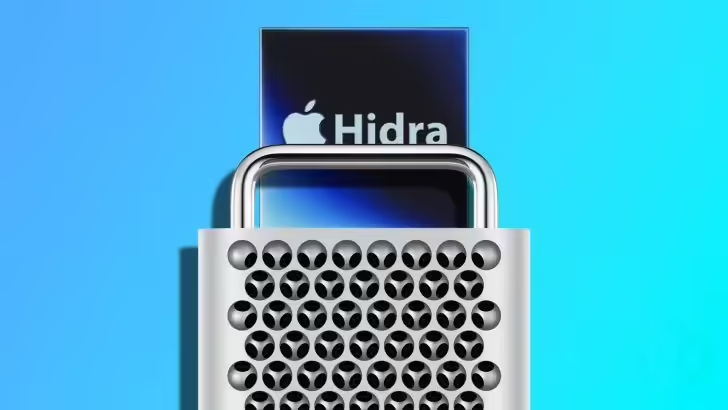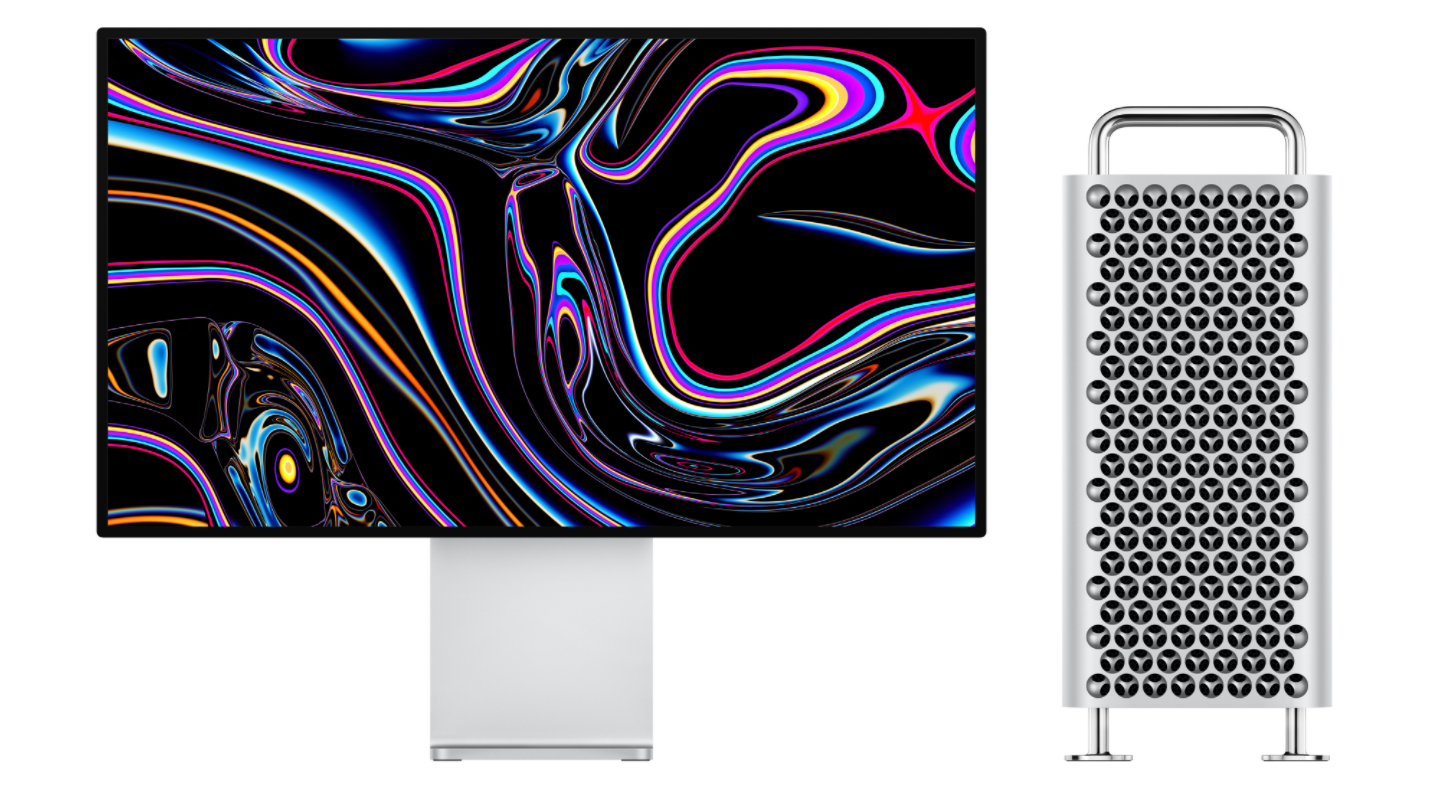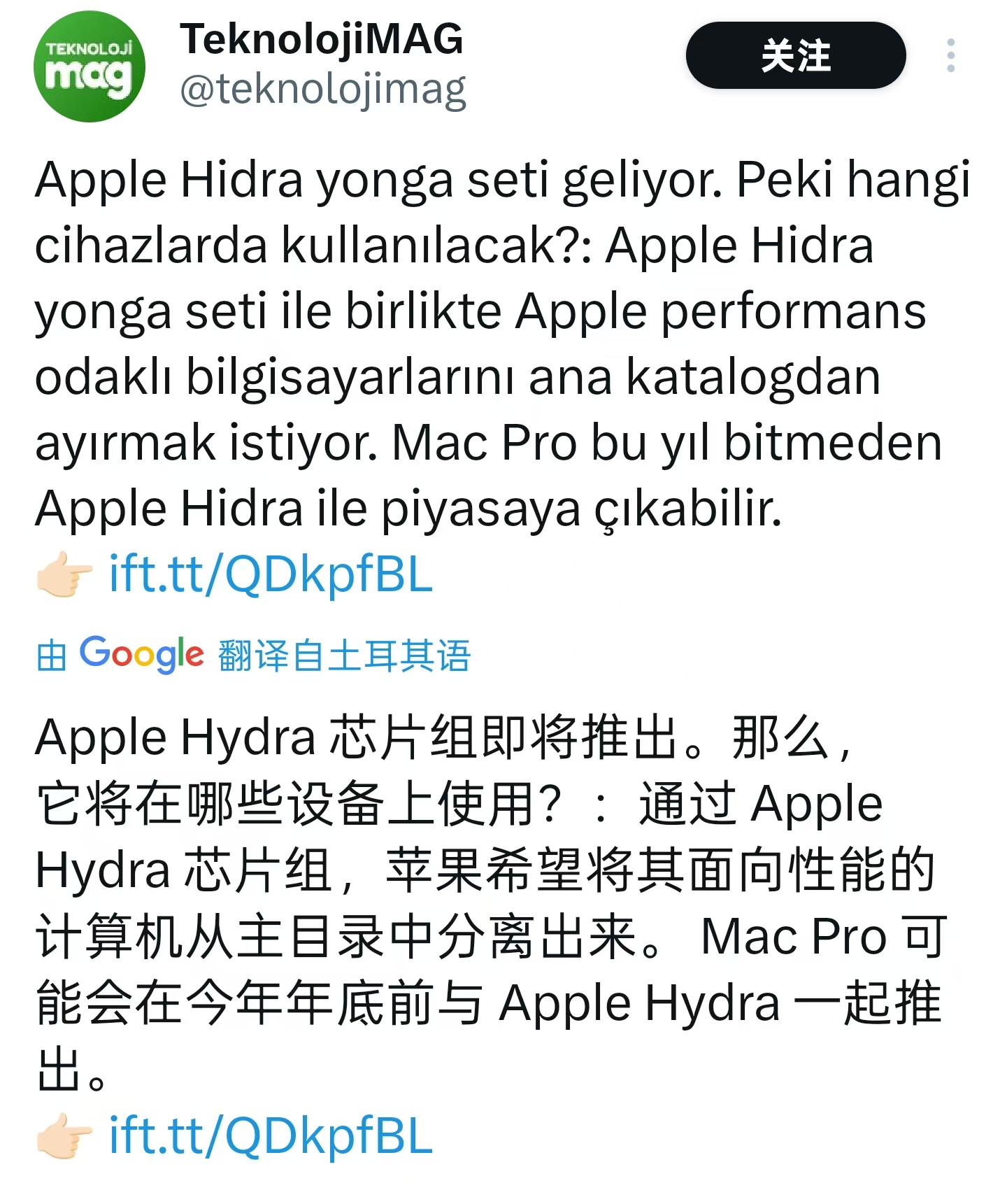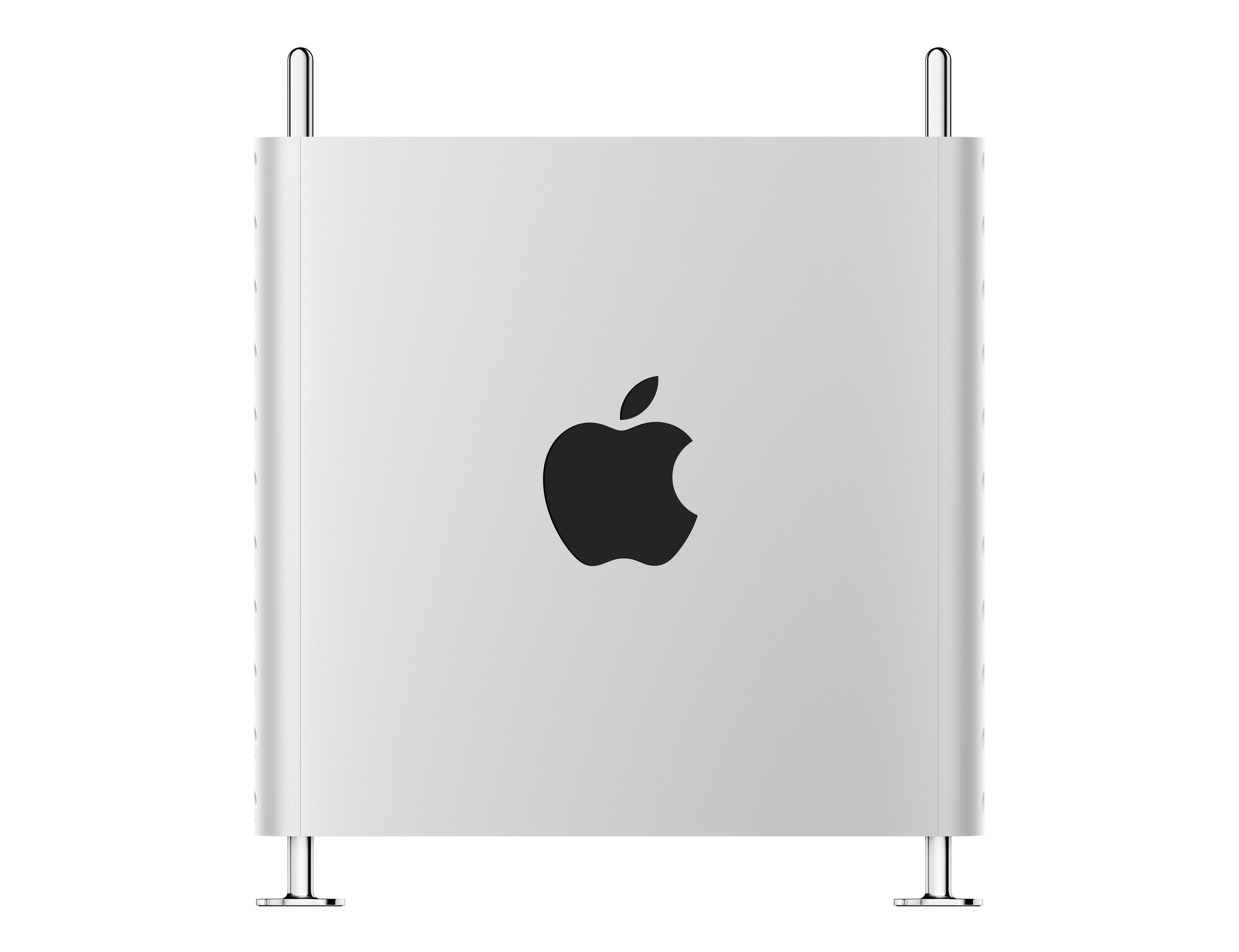Apple Unveils Its Most Powerful Chip: Exclusively for Mac Pro, Revolutionizing AI PCs?
![]() 01/17 2025
01/17 2025
![]() 462
462
Apple's chip announcements are coming thick and fast, indicating an accelerated pace of development.
In December 2024, TF International Securities analyst Ming-Chi Kuo revealed the progress of Apple's M5 series computing platform, stating that it would be built using TSMC's N3P process technology. To enhance production yield and thermal performance, the M5 Pro/Max/Ultra will all employ SolC packaging for server-grade chips, combined with a segregated design for CPU and GPU.
He also mentioned that Apple's PCC infrastructure, which is better suited for AI inference, will accelerate after high-end M5 chips enter mass production, potentially signaling that Apple products equipped with the M5 series and subsequent new computing platforms will witness further growth in AI capabilities.
Recently, WccfTech stated in a blog post that Apple is creating the most powerful computing platform, codenamed "Hidra," exclusively for Mac Pro. Specific specifications have not been disclosed. According to Bloomberg journalist Mark Gurman, the codename "Hidra" signifies a CPU and GPU with more cores than the M4 Ultra, delivering superior performance.

(Image from X)
Most of Apple's Mac/MacBook product lines have completed the transition to the M4 series computing platform, leaving only MacBook Air, Mac Studio, and Mac Pro yet to be updated. Although the M4 Ultra still shrouds in mystery, its release appears imminent.
From these news reports, it's evident that Apple seems to have deliberately accelerated the iteration speed of the M series computing platform and, through a series of platform upgrades, redefined the hierarchy within the Mac series products.
Apple's Mac chips reach a new pinnacle
In fact, Apple's M series computing platform has always maintained a relatively clear hierarchy.
According to Apple's plan, the M4 series computing platform will comprise three main models: Donan, Brava, and Hidra. Donan (M4) is used in entry-level MacBook Pro, MacBook Air, and low-end Mac mini models; Brava (M4 Pro, M4 Max as "BravaChop") is utilized in high-end MacBook Pro and high-end Mac mini models.
Ultra, as the apex of Apple's M series chips, targets top-tier high-performance hosts such as Mac Studio and Mac Pro. The current Mac Pro and Mac Studio use computing platforms with M2 Ultra and up to 192GB of unified memory + 8TB of storage. While Mac Pro boasts expansion space, their target audiences differ, and the higher price of the former does not necessarily translate into significantly superior hardware compared to the latter.

(Image from Apple)
The computing platform codenamed "Hidra" is exclusive to the next-generation Mac Pro, surpassing the performance of M4 Ultra and better distinguishing Mac Pro from Mac Studio. For reference, M4 Ultra boasts up to 32 CPU cores and 80 GPU cores, with CPU theoretical performance expected to eclipse AMD Ryzen 9 9950X. Since "Hidra" builds upon this foundation, its hardware scale should further expand.
Additionally, rumors suggest that Apple has several chips already in development internally, codenamed "Sotra_C," "Sotra_S," "Sotra_D," "Thera," "Komodo," and "Tilos." Specific details are not yet available.
X platform user @teknolojimag added that Apple might also want to separate the "Hidra" computing platform from the M series, positioning it as an independent product with higher performance.

(Image from X)
While most people may not use products like Mac Pro, some genuine users on the X platform have expressed that Mac Pro indeed necessitates a more powerful processor. At least in my opinion, Mac Pro caters to studio production groups and is more than capable of handling the high-intensity demands of professionals. To underscore Mac Pro's premium positioning, a processor like "Hidra" is indispensable, providing ample performance redundancy for more intricate computing needs in the future.
Given Mac Pro's distinct "elite" positioning, it doesn't necessarily need to consider factors like cost control. Apple can boldly implement more cutting-edge technologies, including but not limited to the aforementioned SolC packaging and TSMC's 2nm process technology.
Server-grade chip packaging, in essence, allows chips to achieve higher integration density under the same process conditions. From another perspective, "Hidra" should be able to enhance scale and theoretical performance without further increasing chip size.
Therefore, with the advent of the "Hidra" computing platform, I believe it officially segregates Mac Pro from Mac Studio, making the hierarchy of the Mac family clearer. Moreover, these two high-performance hosts have not been updated for a considerable time, and the current models still employ M2 Ultra/Max. In the era of AI, there is a greater emphasis on computing hardware performance, and "Hidra" enables Apple to set a new benchmark in the realm of computing platforms.
Is the ultimate AI PC on the horizon?
Some may ponder if Apple's M series computing platform already boasts advanced energy efficiency and performance, and whether it's sensible to further boost processing power without adequate game resource compatibility.
Discussing solely from the perspective of game compatibility, Apple has made notable progress in recent years. M3 and M3 Max have significantly improved graphical performance, supporting hardware-accelerated mesh shading and ray tracing technology, and can stably run "Baldur's Gate 3" at medium graphics settings with 30 frames per second at 2K resolution. Furthermore, native 3A titles like "Resident Evil 8" have been adapted for macOS and are available on the App Store.
Even for games not available in Apple's game library, some 3A games can be played through translation using third-party tools.
However, I believe that Apple's Mac products and M series chips are inherently designed for efficient work, particularly products like Mac Pro and Mac Studio, which primarily target studio-level professional productivity, such as graphic rendering and media processing. Professional production, while a small segment of the computer market, has much higher standards for hardware and software than ordinary computer devices, in which Apple currently reigns supreme.
Moreover, in line with the AI era, professional software is equipped with a series of generative AI features, and the computer's operating system itself provides capabilities like Apple Intelligence for large models. Another facet is the offline edge AI large model. Notably, Apple also has two edge AI models, OpenELM and AFM-on-device, with the AFM-on-device model running on iPhone 16 containing 3 billion parameters. Apple has not explicitly stated this, but I speculate that "Hidra" is, to some extent, preparing the hardware for the arrival of more powerful models.

(Image from Apple's official website)
Generally speaking, AI large models possess billions to trillions of parameters, and the complexity of the models and subsequent training demands further augment computational pressure. In other words, the higher-performance "Hidra" developed for Mac Pro provides a platform for running offline AI large models with higher parameters.
As indicated on Apple's official website, "Ready for Apple Intelligence," whether it's the Mac mini with 8GB of RAM as standard or the fully deployed M4 and subsequent updated processing platforms, Apple is preparing all its smart devices to be equipped with Apple Intelligence. It's believed that MacBook Air, Mac Pro, and Mac Studio will also undergo upgrades in the next two years.
However, speculation remains speculation. Apple Intelligence is still an uncharted territory in China, and its entry is uncertain. We can only anticipate Apple's next moves.
Apple remains the benchmark for high-performance chips
Overall, "Hidra" differs from M5. It's not a product of minor optimizations based on advanced process nodes. The latter merely needs to ensure its competitive edge in the ARM-based computer market, but the former's aim should be to set a new performance benchmark for Apple. Simultaneously, its technical and production challenges will also be formidable, meaning it won't go into mass production and hit the market soon.
For most consumers, such a product may not hold much significance, and discussing the "Hidra" chip and the new generation of Mac Pro from a sales and market perspective may not yield much reference value. This is simply not a product for the mainstream market.
However, I believe that Apple's accelerated chip iteration pace is influenced by external factors, including pressure from competitors. AMD's Ryzen AI Max+395 processor performs impressively, with its integrated Radeon 8060S GPU performing close to RTX 4070 at 70W power consumption. Compared to M4 Max, the former boasts stronger CPU multi-core performance. Meanwhile, competitors have also recognized the importance of AI and are vigorously developing AI computing.

(Image from Apple)
The emergence of Qualcomm's Snapdragon X Elite and Intel's Ultra 200V series has significantly enhanced laptops' battery life, which is precisely an area where Apple's M series chips excel. This indicates that competitors are catching up swiftly, encroaching on the territory reserved for Mac series. In the realm of high-performance processors, Apple's in-house chips also face certain pressure.
Moreover, Mac series prices are generally not affordable, and support for ordinary needs such as gaming remains inadequate, which may, to some extent, alienate the mainstream market.
However, given Apple's capabilities, I believe it won't be a herculean task to maintain its leading position in the high-performance processor race. The recently released Mac mini continues the legacy of being "the most affordable Mac ever," as described by Steve Jobs, and many of my colleagues have seized the opportunity to purchase it. This underscores the persistent demand for cost-effective Apple products.
I can only say that starting from the multi-device ecosystem and software ecosystem, Apple's Mac and its M series chips still hold strong sway. Only Apple itself knows how to sustain its preeminent position in the market.
Source: Leitech








